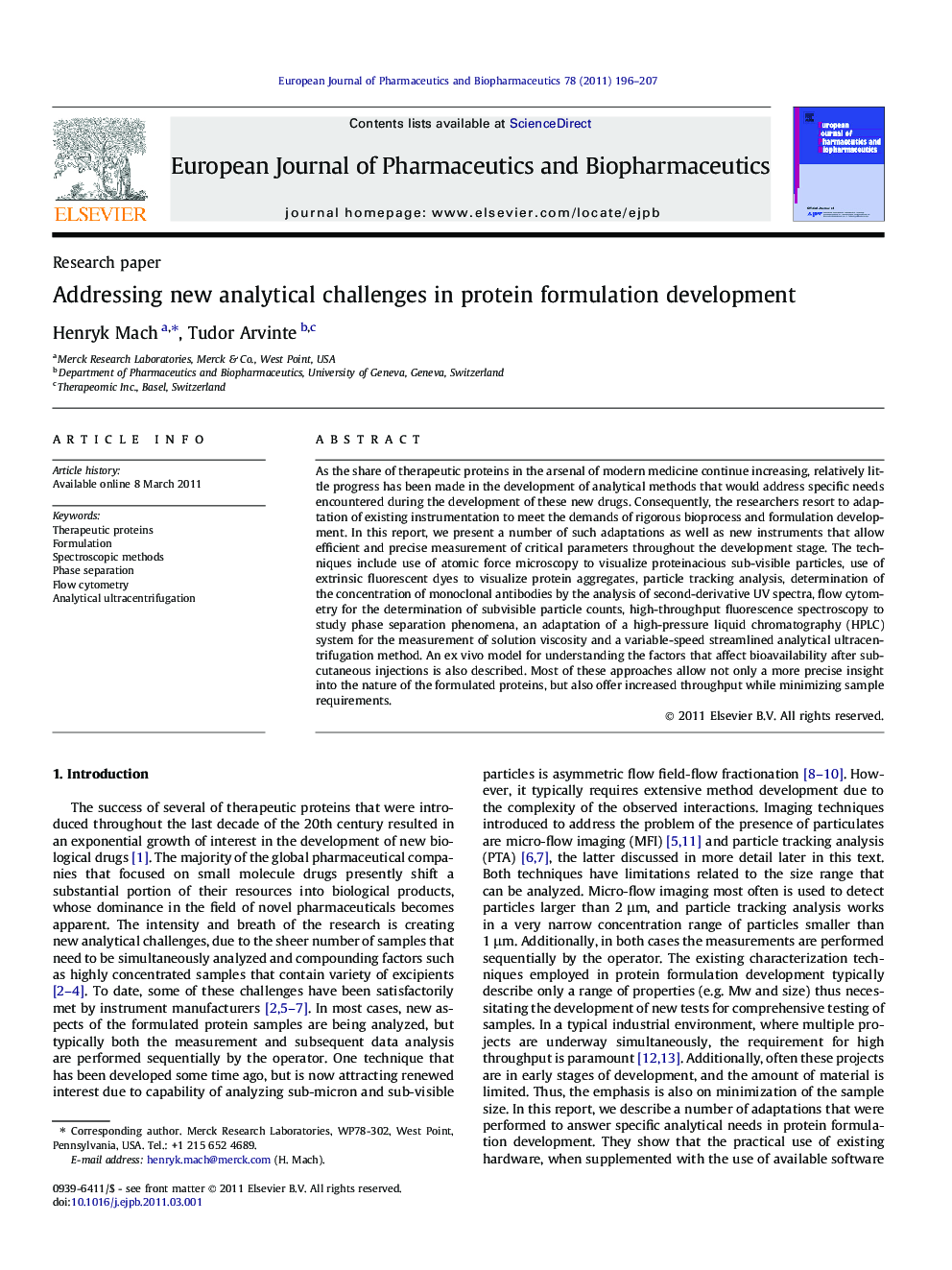| Article ID | Journal | Published Year | Pages | File Type |
|---|---|---|---|---|
| 2084074 | European Journal of Pharmaceutics and Biopharmaceutics | 2011 | 12 Pages |
As the share of therapeutic proteins in the arsenal of modern medicine continue increasing, relatively little progress has been made in the development of analytical methods that would address specific needs encountered during the development of these new drugs. Consequently, the researchers resort to adaptation of existing instrumentation to meet the demands of rigorous bioprocess and formulation development. In this report, we present a number of such adaptations as well as new instruments that allow efficient and precise measurement of critical parameters throughout the development stage. The techniques include use of atomic force microscopy to visualize proteinacious sub-visible particles, use of extrinsic fluorescent dyes to visualize protein aggregates, particle tracking analysis, determination of the concentration of monoclonal antibodies by the analysis of second-derivative UV spectra, flow cytometry for the determination of subvisible particle counts, high-throughput fluorescence spectroscopy to study phase separation phenomena, an adaptation of a high-pressure liquid chromatography (HPLC) system for the measurement of solution viscosity and a variable-speed streamlined analytical ultracentrifugation method. An ex vivo model for understanding the factors that affect bioavailability after subcutaneous injections is also described. Most of these approaches allow not only a more precise insight into the nature of the formulated proteins, but also offer increased throughput while minimizing sample requirements.
Graphical abstractFigure optionsDownload full-size imageDownload as PowerPoint slide
